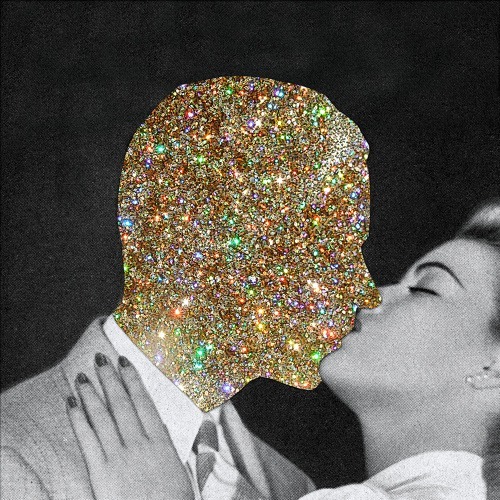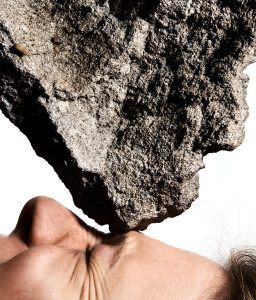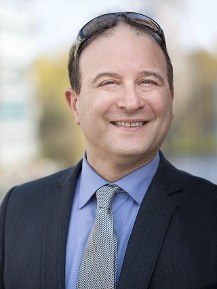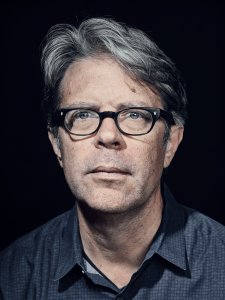Lena Schipper in The Economist:
 Visitors to Pyongyang, North Korea’s capital, often report feeling as though they have landed in a Truman-Show-type setup, unable to tell whether what they see is real or put there for their benefit, to be cleared away like props on a stage once they have moved on. The recent transformation of Kim Jong Un, the country’s dictator, from recluse to smooth-talking statesman has heightened interest in the country but not really shaken the fundamental sense of bewilderment when trying to make sense of it. Oliver Wainwright, the Guardian’s architecture critic (and the brother of The Economist’s Britain editor), who has compiled his photographs from a week-long visit to Pyongyang in 2015 into a glossy coffee-table book published by Taschen, starts from this initial sense of strangeness. He describes wandering around Pyongyang as moving through a series of stage sets from North Korean socialist-realist operas, where every view is carefully arranged to show off yet another monument or apartment building. But his eye is also alive to what the city, which was originally planned by a Soviet-trained architect, has in common with other places that were influenced by Soviet aesthetics.
Visitors to Pyongyang, North Korea’s capital, often report feeling as though they have landed in a Truman-Show-type setup, unable to tell whether what they see is real or put there for their benefit, to be cleared away like props on a stage once they have moved on. The recent transformation of Kim Jong Un, the country’s dictator, from recluse to smooth-talking statesman has heightened interest in the country but not really shaken the fundamental sense of bewilderment when trying to make sense of it. Oliver Wainwright, the Guardian’s architecture critic (and the brother of The Economist’s Britain editor), who has compiled his photographs from a week-long visit to Pyongyang in 2015 into a glossy coffee-table book published by Taschen, starts from this initial sense of strangeness. He describes wandering around Pyongyang as moving through a series of stage sets from North Korean socialist-realist operas, where every view is carefully arranged to show off yet another monument or apartment building. But his eye is also alive to what the city, which was originally planned by a Soviet-trained architect, has in common with other places that were influenced by Soviet aesthetics.
When I first went to Pyongyang earlier this year, the pastel-hued tower blocks, the streetlight fittings shaped like blossom and the interiors decked out in retro colour schemes all seemed strangely familiar. I realised they reminded me of a mid-century-era theme park I’d visited as a child – it has long since closed down – on an island in east Berlin, where people crossed artificial lakes in swan-shaped pedal boats against the backdrop of a ferris wheel with ice-cream-coloured pods. It was only the parade-ready avenues, the enormous bronze statues of the great leaders and the giant monuments to the Workers’ Party and the country’s “Juche” ideology, that gave the game away that we were in the capital of a hereditary totalitarian dictatorship.
More here.

 You can halt aging without punishing diets or costly drugs. You just have to wait until you’re 105. The odds of dying stop rising in people who are very old, according to a new study that also suggests we haven’t yet hit the limit of human longevity. The work shows “a very plausible pattern with very good data,” says demographer Joop de Beer of the Netherlands Interdisciplinary Demographic Institute in The Hague, who wasn’t connected to the research. But biodemographer Leonid Gavrilov of the University of Chicago in Illinois says he has doubts about the quality of the data. As we get older, our risk of dying soars. At age 50, for example, your risk of kicking the bucket within the next year is more than three times higher than when you’re 30. As we head into our 60s and 70s, our chances of dying double about every 8 years. And if you’re lucky enough to hit 100 years, your odds of making it to your next birthday are only about 60%. But there may be a respite, according to research on lab animals such as fruit flies and nematodes. Many of these organisms show so-called mortality plateaus, in which their chances of death no longer go up after a certain age. It’s been hard to show the same thing in humans, in part because of the difficulty of obtaining acccurate data on the oldest people. So, in the new study, demographer Elisabetta Barbi of the Sapienza University of Rome and colleagues turned to a database compiled by the Italian National Institute of Statistics. It includes every person in the country who was at least 105 years old between the years 2009 and 2015—a total of 3836 people. Because Italian municipalities keep careful records on their residents, researchers at the institute could verify the individuals’ ages. “These are the cleanest data yet,” says study co-author Kenneth Wachter, a demographer and statistician at the University of California, Berkeley.
You can halt aging without punishing diets or costly drugs. You just have to wait until you’re 105. The odds of dying stop rising in people who are very old, according to a new study that also suggests we haven’t yet hit the limit of human longevity. The work shows “a very plausible pattern with very good data,” says demographer Joop de Beer of the Netherlands Interdisciplinary Demographic Institute in The Hague, who wasn’t connected to the research. But biodemographer Leonid Gavrilov of the University of Chicago in Illinois says he has doubts about the quality of the data. As we get older, our risk of dying soars. At age 50, for example, your risk of kicking the bucket within the next year is more than three times higher than when you’re 30. As we head into our 60s and 70s, our chances of dying double about every 8 years. And if you’re lucky enough to hit 100 years, your odds of making it to your next birthday are only about 60%. But there may be a respite, according to research on lab animals such as fruit flies and nematodes. Many of these organisms show so-called mortality plateaus, in which their chances of death no longer go up after a certain age. It’s been hard to show the same thing in humans, in part because of the difficulty of obtaining acccurate data on the oldest people. So, in the new study, demographer Elisabetta Barbi of the Sapienza University of Rome and colleagues turned to a database compiled by the Italian National Institute of Statistics. It includes every person in the country who was at least 105 years old between the years 2009 and 2015—a total of 3836 people. Because Italian municipalities keep careful records on their residents, researchers at the institute could verify the individuals’ ages. “These are the cleanest data yet,” says study co-author Kenneth Wachter, a demographer and statistician at the University of California, Berkeley. Athanassios Fokas, a mathematician from the Department of Applied Mathematics and Theoretical Physics of the University of Cambridge and visiting professor in the Ming Hsieh Department of Electrical Engineering at the USC Viterbi School of Engineering has announced the solution of one of the long-standing problems in the history of mathematics, the Lindelöf Hypothesis.
Athanassios Fokas, a mathematician from the Department of Applied Mathematics and Theoretical Physics of the University of Cambridge and visiting professor in the Ming Hsieh Department of Electrical Engineering at the USC Viterbi School of Engineering has announced the solution of one of the long-standing problems in the history of mathematics, the Lindelöf Hypothesis. MANY TUESDAY NIGHT were asking, “who is Alexandria Ocasio-Cortez” after her stunning primary victory over the No. 4 House Democrat Joe Crowley in New York’s 14th District. The New York Times called her a “Democratic dragon slayer.” MSNBC’s Joy Reid admitted on Twitter to “doing an Ocasio-Cortez crash course.” She didn’t have a Wikipedia page until last night. A year ago, she was working as a bartender in Manhattan. She is young. She’s working class. She’s a New Yorker who has been immersed in community-based leadership, organizing, and service work.
MANY TUESDAY NIGHT were asking, “who is Alexandria Ocasio-Cortez” after her stunning primary victory over the No. 4 House Democrat Joe Crowley in New York’s 14th District. The New York Times called her a “Democratic dragon slayer.” MSNBC’s Joy Reid admitted on Twitter to “doing an Ocasio-Cortez crash course.” She didn’t have a Wikipedia page until last night. A year ago, she was working as a bartender in Manhattan. She is young. She’s working class. She’s a New Yorker who has been immersed in community-based leadership, organizing, and service work.
 Independent and self-reliant, Spark was not an ideological feminist, although she portrayed strong and self-willed women, ranging from school teachers to film stars, abbesses, terrorists and billionaires. Even her admirers (among them Joyce Carol Oates, Ali Smith and Elaine Feinstein) use words such as “arch”, “pert” and “sly” to describe her prose, compliments which some feminists might reject as sexist. Catholics see her as a Catholic writer, but while her work has something in common with that of her supporter Graham Greene, her attitudes to her faith are far from conventional. Frank Kermode (who thought Spark “our best novelist”) describes her religion as “bafflingly idiosyncratic”. She wrote of sin and suffering, liked to split theological hairs, and was particularly drawn to the Book of Job, but many of her portraits of believers are caustic in the extreme. The devout, gullible and multiple-bosomed Mrs Hogg in her first novel, The Comforters(1957), the pig-eyed treacherous convert Sandy Stranger in The Prime of Miss Jean Brodie, the divinely wicked Abbess of Crewe and her silly flock, and the camp and parasitical Jesuits, Father Cuthbert Plaice and Father Gerard Harvey (scholar of ecological paganism) in The Takeover (1976), do not show the Church in a good light. The whisky priests and tormented adulterers of Greene fare better at the hands of their creator. This can be puzzling to readers of other faiths or none, though Greene, Evelyn Waugh and David Lodge – all fellow Catholics, and all admirers of Spark – do not seem to discern meaningful incongruities between faith and art.
Independent and self-reliant, Spark was not an ideological feminist, although she portrayed strong and self-willed women, ranging from school teachers to film stars, abbesses, terrorists and billionaires. Even her admirers (among them Joyce Carol Oates, Ali Smith and Elaine Feinstein) use words such as “arch”, “pert” and “sly” to describe her prose, compliments which some feminists might reject as sexist. Catholics see her as a Catholic writer, but while her work has something in common with that of her supporter Graham Greene, her attitudes to her faith are far from conventional. Frank Kermode (who thought Spark “our best novelist”) describes her religion as “bafflingly idiosyncratic”. She wrote of sin and suffering, liked to split theological hairs, and was particularly drawn to the Book of Job, but many of her portraits of believers are caustic in the extreme. The devout, gullible and multiple-bosomed Mrs Hogg in her first novel, The Comforters(1957), the pig-eyed treacherous convert Sandy Stranger in The Prime of Miss Jean Brodie, the divinely wicked Abbess of Crewe and her silly flock, and the camp and parasitical Jesuits, Father Cuthbert Plaice and Father Gerard Harvey (scholar of ecological paganism) in The Takeover (1976), do not show the Church in a good light. The whisky priests and tormented adulterers of Greene fare better at the hands of their creator. This can be puzzling to readers of other faiths or none, though Greene, Evelyn Waugh and David Lodge – all fellow Catholics, and all admirers of Spark – do not seem to discern meaningful incongruities between faith and art. The secret of his leadership lies in a profound pessimism that is reflected in his approach to the conflict (and, to an extent, to life). It’s a pessimism that is regarded as realism by most Israelis. The fact that the evaporation of hope in the peace process has been accompanied in recent years by an economic and cultural boom in Israel has enabled him to justify his policy, exacerbating the frustration of the liberal camp in Israel, which, as in many other parts of the Western world, is in decline.
The secret of his leadership lies in a profound pessimism that is reflected in his approach to the conflict (and, to an extent, to life). It’s a pessimism that is regarded as realism by most Israelis. The fact that the evaporation of hope in the peace process has been accompanied in recent years by an economic and cultural boom in Israel has enabled him to justify his policy, exacerbating the frustration of the liberal camp in Israel, which, as in many other parts of the Western world, is in decline.
 To be clear: A migraine is not a headache, and people with migraines don’t like their condition being called one. It’s not that headaches aren’t part of a migraine: They are. But a headache is a single symptom of a multifaceted neurological disease — one that includes loss of vision, intense nausea, and sensitivity to light and sound. And those are just the common side effects. Some sufferers find themselves yawning compulsively, slurring their speech, and losing sensation on one side of the body. Some migraineurs (yes, that is the technically accurate moniker for migraine sufferers) start seeing big things as small — a side effect dubbed “Alice in Wonderland syndrome” by doctors. Nonetheless, for as long as they have existed, migraines have been trivialized as headaches or dismissed altogether. Which is clear when you look at the treatments available: Almost every drug used between 1550 B.C. and today has been a repurposed one. Poultices of opium and honey, botox, anti-convulsant drugs, antidepressants, beta blockers — drugs whose efficacy was not intended but stumbled upon. Triptan, a class of vessel constrictors created to abort and lessen the effects of (not prevent) attacks at their onset was released in 1991. It was the only class of drug created specifically for migraines — that is, until now. On May 17, a preventative drug called Aimovig, 30 years in the making, gained FDA approval; it’s a monthly shot that modulates patients’ levels of CGRP, a neurotransmitter whose levels rise during migraine attacks. This means that it is days away from getting in the hands (or arms — it’s an injectable) of migraineurs. At at least for those who are able to pay full price: The drug costs $6,900 a year, or $575 per treatment.
To be clear: A migraine is not a headache, and people with migraines don’t like their condition being called one. It’s not that headaches aren’t part of a migraine: They are. But a headache is a single symptom of a multifaceted neurological disease — one that includes loss of vision, intense nausea, and sensitivity to light and sound. And those are just the common side effects. Some sufferers find themselves yawning compulsively, slurring their speech, and losing sensation on one side of the body. Some migraineurs (yes, that is the technically accurate moniker for migraine sufferers) start seeing big things as small — a side effect dubbed “Alice in Wonderland syndrome” by doctors. Nonetheless, for as long as they have existed, migraines have been trivialized as headaches or dismissed altogether. Which is clear when you look at the treatments available: Almost every drug used between 1550 B.C. and today has been a repurposed one. Poultices of opium and honey, botox, anti-convulsant drugs, antidepressants, beta blockers — drugs whose efficacy was not intended but stumbled upon. Triptan, a class of vessel constrictors created to abort and lessen the effects of (not prevent) attacks at their onset was released in 1991. It was the only class of drug created specifically for migraines — that is, until now. On May 17, a preventative drug called Aimovig, 30 years in the making, gained FDA approval; it’s a monthly shot that modulates patients’ levels of CGRP, a neurotransmitter whose levels rise during migraine attacks. This means that it is days away from getting in the hands (or arms — it’s an injectable) of migraineurs. At at least for those who are able to pay full price: The drug costs $6,900 a year, or $575 per treatment. Regular readers know (recall) that
Regular readers know (recall) that 
 “We cured alcoholism in every rat we ever tried,” says Heilig, who is now at Linköping University in Sweden. “And at the end of every paper, we wrote: This will lead to an exciting treatment. But everything we took from these animal models to the clinic failed. We needed to go back to the drawing board.”
“We cured alcoholism in every rat we ever tried,” says Heilig, who is now at Linköping University in Sweden. “And at the end of every paper, we wrote: This will lead to an exciting treatment. But everything we took from these animal models to the clinic failed. We needed to go back to the drawing board.” Anyone with a pundit’s opinion about the election in Turkey seemed to feel that it was, in some way or other, the ‘most important’ one in.. well.. in a generation, in modern times, possibly ever. Yet it was hardly as pivotal as the referendum a year ago when Recep Tayyip Erdogan barely scraped a majority to move all executive power to the Presidency where he presided. After that, his triumph in the recent June 24th balloting was a foregone conclusion. Because we know this much about populist authoritarians hiding behind the legitimacy of plebiscites: they never lose. They don’t leave things to chance. They orchestrate the media, the opinion polls, the electoral commissions, the permits for rallies, political party funders, last-minute money printing, naturalization of foreigners, and the police who arrest opposition candidates.
Anyone with a pundit’s opinion about the election in Turkey seemed to feel that it was, in some way or other, the ‘most important’ one in.. well.. in a generation, in modern times, possibly ever. Yet it was hardly as pivotal as the referendum a year ago when Recep Tayyip Erdogan barely scraped a majority to move all executive power to the Presidency where he presided. After that, his triumph in the recent June 24th balloting was a foregone conclusion. Because we know this much about populist authoritarians hiding behind the legitimacy of plebiscites: they never lose. They don’t leave things to chance. They orchestrate the media, the opinion polls, the electoral commissions, the permits for rallies, political party funders, last-minute money printing, naturalization of foreigners, and the police who arrest opposition candidates. “The idea of death, the fear of it, haunts the human animal like nothing else,” wrote Earnest Becker in his book,
“The idea of death, the fear of it, haunts the human animal like nothing else,” wrote Earnest Becker in his book,  Jonathan Franzen now lives in a humble, perfectly nice two-story house in Santa Cruz, Calif., on a street that looks exactly like a lot of other streets in America and that, save for a few cosmetic choices, looks exactly like every other house on the block. Santa Cruz, he says, is a “little pocket of the ’70s that persisted.” Inside his house, there is art of birds — paintings and drawings and figurines. Outside, in the back, there are actual birds, and a small patio, with a four-person wrought-iron dining set, and beyond that, a shock: a vast, deep ravine, which you would never guess existed behind the homes on such a same-looking street, but there it is. There is so much depth and flora to it, so much nature, so many birds — whose species Franzen names as they whiz by our faces — that you almost don’t notice the ocean beyond.
Jonathan Franzen now lives in a humble, perfectly nice two-story house in Santa Cruz, Calif., on a street that looks exactly like a lot of other streets in America and that, save for a few cosmetic choices, looks exactly like every other house on the block. Santa Cruz, he says, is a “little pocket of the ’70s that persisted.” Inside his house, there is art of birds — paintings and drawings and figurines. Outside, in the back, there are actual birds, and a small patio, with a four-person wrought-iron dining set, and beyond that, a shock: a vast, deep ravine, which you would never guess existed behind the homes on such a same-looking street, but there it is. There is so much depth and flora to it, so much nature, so many birds — whose species Franzen names as they whiz by our faces — that you almost don’t notice the ocean beyond.